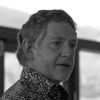How will community be built in the 21st century? If you want to know the lie of the land, sometimes you must literally see how the land lies and what human beings have done to it.
Ancient settlements were connected by trade routes and divided by fault lines: valleys, rivers and hills were means meeting or contested territory. This week I was in Luton, where the barriers and bridges, physical and psychological, were obvious - sometimes painfully so.
Arrive by train and you soon find yourself in one of the town's empty spaces. St George's Square is not supposed to be empty: it is one of those bits of public realm left over from the days when local authorities had money to spend to make their town centres buzzing and vibrant. It has a patch of green, a fountain where children can play, and around the edge a Wetherspoon pub and a Costa Coffee.
Watching people use the space, most of which is paved, was informative. People crossed to go into The Mall, the indoor shopping centre that, like a black hole, sucks in the town's life behind its blank walls. They sat on the edges to wait for a bus or passed through towards the town hall and pedestrianised shopping area. Although it was the half term holiday, there was no sign of any kids - neither young children nor teenagers hanging out. Pigeons bathed in the puddle created by the fountain.
Wend your way through the hard landscaping of George Street, take a turn to the left, and you'll find yourself eventually at Luton's parish church, St Mary's. Between the church and The Mall, railings corral pedestrians and windowless walls proclaim this the backside of town. Over towards the railway, an abandoned industrial estate awaits redevelopment. The place that might once have been the social core of the town has become a traffic-ruled no-man's-land.
On the opposite side of the town centre is Bury Park. To reach Bury Park on foot from the town centre you have to risk life and limb crossing multiple lanes of traffic, or traverse a skeletal concrete bridge high above the inner ring. When there is trouble, as there has been in recent years, it's easy for the police to seal off Bury Park from the town centre, closing the bridge and using the natural barriers of major roads.
These unpeopled places are more than physical barriers. They keep communities from each other. Lines on the map can become lines of fear and suspicion, resentment and grievance.
In Luton these lines are particularly fraught. In the 1990s the town was associated with the Islamic extremism of Abu Hamza; two-and-a-half years ago this erupted when a small group of al-Muhajiroun supporters gatecrashed the homecoming parade of the Royal Anglian Regiment and hurled insults at the returning solders.
That incident served as a red rag to the already inflamed passions of the town's far right. Luton soon became known as the heartland of the English Defence League, the port from which they have exported their particular brand of fascism to towns and cities across England.
Inevitably, assumptions begin to take over from the reality. As supporters of the EDL are predominantly white and working-class, a Muslim living in Bury Park might soon imagine every white working-class Englishman as a threat. When, as has happened, a local mosque is firebombed, such fears grow and, left alone, take root.
The assumptions encroach on the other side, too. If extremists and ideologues wear traditional Islamic dress, how do non-Muslims know anyone in Islamic garb is safe? In such a climate of suspicion, each community assumes the other guilty until proved innocent.
But just as physical places can create psychological barriers, they can also help bring them down.
Some of these will be neutral places. The bland, familiar spaces of a Costa Coffee or a shopping mall can sometimes make the different less alien, the alien less scary. What adds no distinction or creativity to the urban mix can, perversely, be a place where people can leave some of their cultural luggage at the door. These non-territories can provide a setting where there is less to lose by talking.
A better place for bridge-building is the meal table. Neutrality is the lowest common denominator approach to community, the waiting room at the start of the journey. Food at its blandest is the negation of culture; food prepared with care is an expression of identity and pride. When we taste the way others express themselves, our palate is stimulated and our curiosity is aroused. We start to want to know more about the people who express themselves in this way.
Eventually, we can start to engage with spaces that are entirely 'other'. This week a Muslim community worker showed me the mosque that was firebombed, taking me into the side room where the window was forced and explaining the damage that was done. By getting an inkling of his story and part of the story of the people who use that space, it's possible to appreciate the fears and suspicions they might have and their desire to find safety in their own spaces.
Looking around Luton and listening to the stories of two men whose work is to build bridges between faiths and cultures, I was reminded of the kaleidoscopic complexities of building communities. But sitting with them and chatting and observing the trust between them, I came away optimistic that we can devise meetings of body and mind that can move beyond an ubiquitous blandness into a serious engagement with people's real selves.
